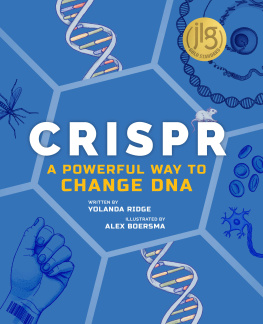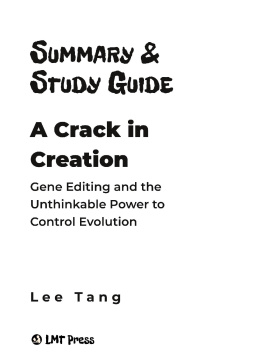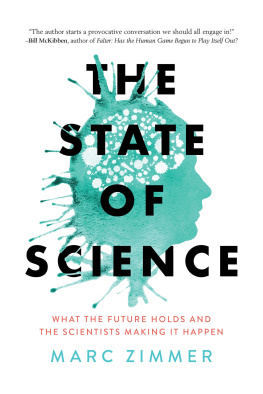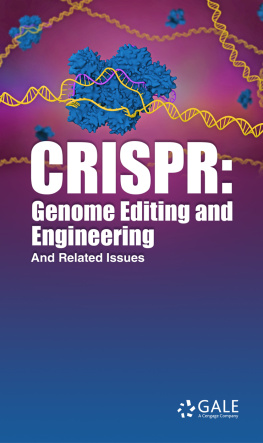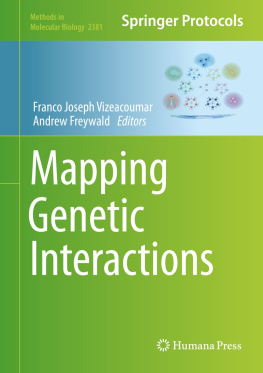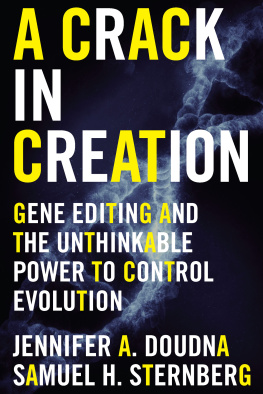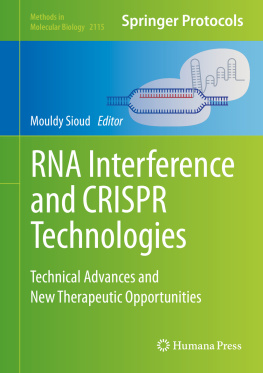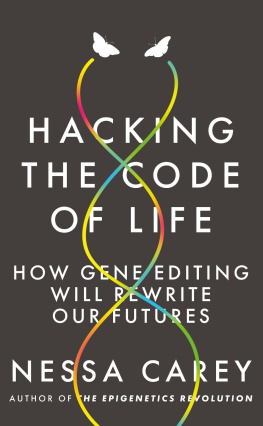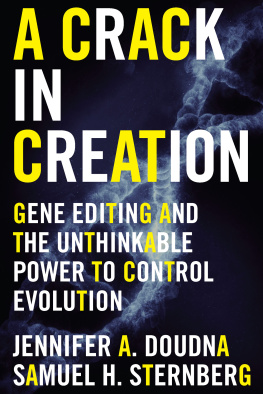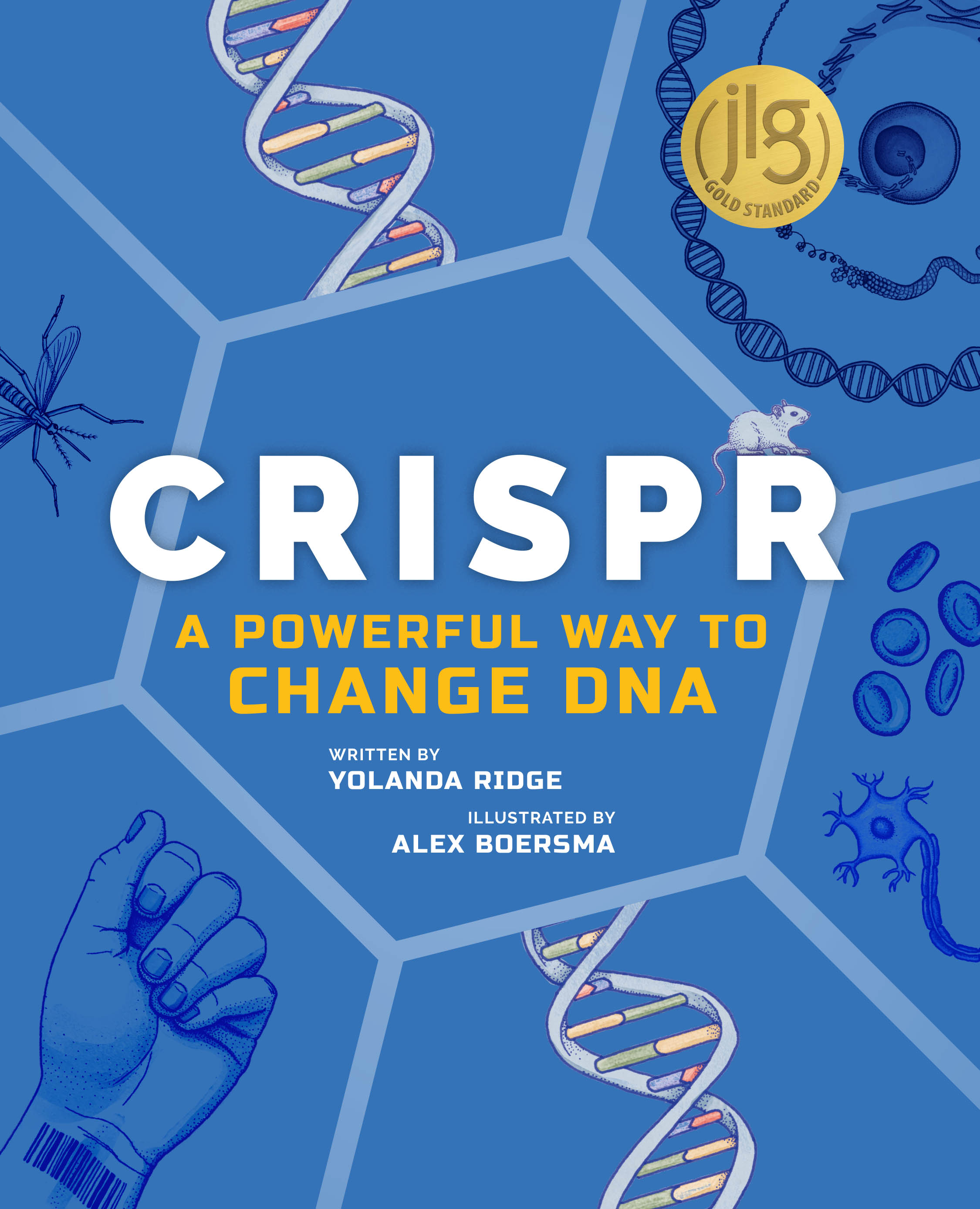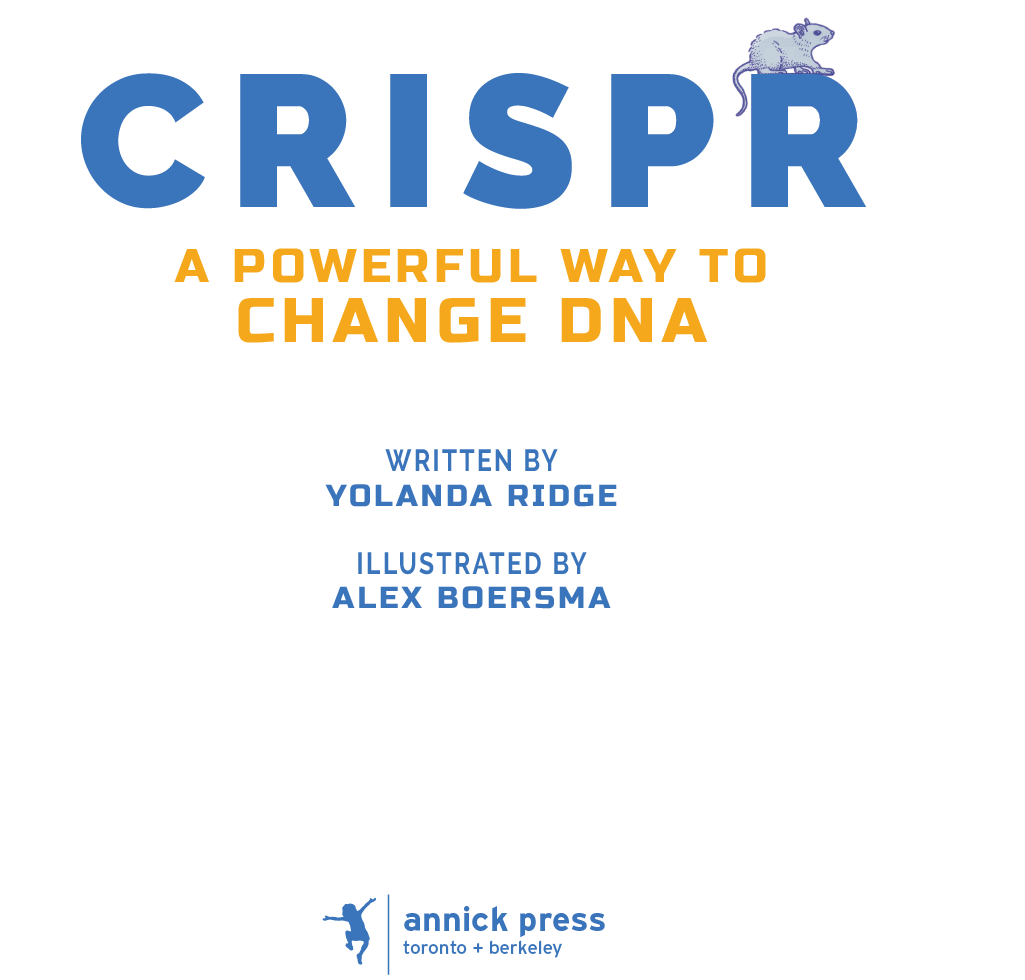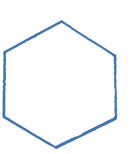This book is dedicated to all my former genetic counseling colleagues, mentors, and friendsand to all of you who will guide societys use of genetic technology into the future. Y.R.
To my parents, my aunt Karen, and my partner, Nick, for their love and support. A.B.
Imagine a world where no one ever gets sicknot even your pet. Imagine theres enough food to feed everyone without destroying the environment. A world where cloned versions of extinct animals are free to roam the earth once again.
You might be surprised to learn that all of thisand morecould be our new reality thanks to CRISPR, a biotechnology that gives humans the power to edit genes in a way thats never been possible before.
In this book, well discuss how gene editing could be used to wipe out disease-carrying mosquitoes and bring back a version of the woolly mammoth. How it could help cure cancer and prevent future pandemics. And how we may be able to create food that can adapt to climate change and be allergy-free and packed full of nutrition. (Chocolate thats even more nutritious than kale? Yes, please!)
Since CRISPR technology is new and constantly evolving, its hard to predict what life will be like in a gene-edited future. The possilibites are endless and amazingbut theyre also a bit scary. Humans havent done a great job of caring for our planet so far, so what happens when we start messing with the entire web of life? Or altering the natural course of evolution? At what point do we change the definition of what it means to be human?
As we dig into the science behind CRISPR, well also explore the pros and cons of gene editing (check out the Stop, Go, and Yield sections at the end of each chapter) and ask some questions to get you thinking about how it might affect your life (see Cutting Questions). In the not-so-distant future, it will be up to each and every one of us to decide whether society should proceed, not proceed, or proceed with caution as we move forward with this powerful technology.
Jumping into
Genetics
Knowing its possible to gene-edit our way to better health, better nutrition, and a world without extinctions is one thing, but understanding how is something else altogether. How can we edit out a persons chance of inheriting a certain disease, for example, or edit in a particular crops resistance to a certain pest? In order to understand how gene editing works, we first need to understand how genes themselves go about their business.
The Genome: Your Personal Instruction Manual
Lets start with the big picture. Every living beingfrom a bacteria to a monkeyhas a genome. The genome is like a really detailed instruction manual. Not only does it tell the body how to function, but it also makes sure this information gets passed down from generation to generation. Its the instructions in your genome that told your body how to do everything from growing a toe to building a brain (with added information about how to keep it running). The genome gave your parents a similar set of instructions, and it will make sure that any kids you have will know how to do this stuff too.
Since every species is different, the genome of every species is different (although the genome of a mosquito and the genome of an elephant are more similar than you might expect). For now, lets focus on the being that matters to us mostthe human being.
Most cells in the human body keep a copy of the entire instruction manual in their command centerotherwise known as the nucleus. Its estimated that the average human body is made up of 37.2 trillion cellsyes, you read that right: 37,200,000,000,000. Thats a lot of instruction manuals!
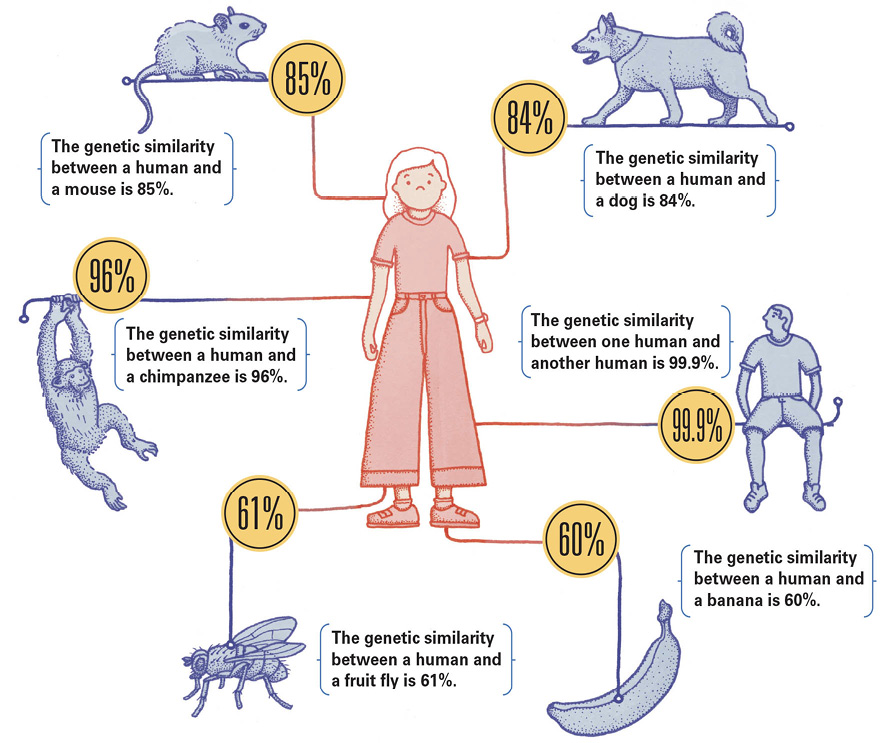
DNA
Instead of being written in words, like the instruction manuals were used to, the genome is written with DNA. If you were to unravel the genome and zoom in with a really powerful microscope, youd eventually see that DNA is the core of it all.
Inside the nucleus of every cell, DNA is bundled into chromosomes that make up the genome.
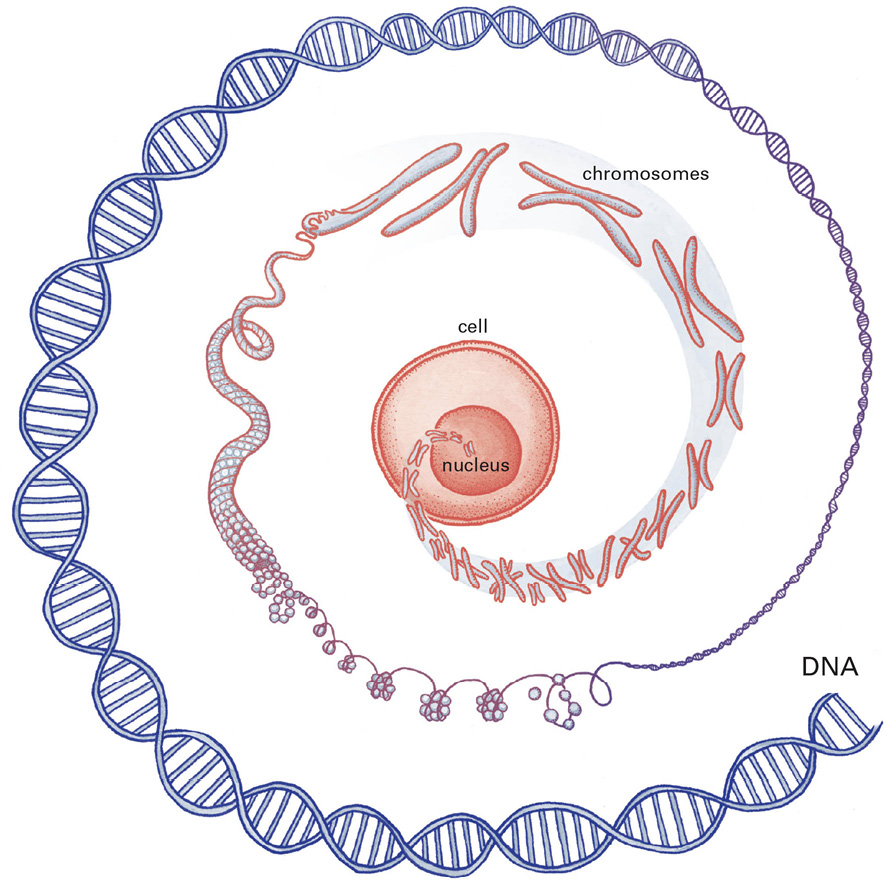
So, what is DNA? The letters stand for deoxyribonucleic acid, which is a long way of saying that DNA is made up of two long strings of molecules called nucleotides. These stringsor strandsspiral together to create whats known as a double helix. If you think of DNA as a twisted ladder, each strand of nucleotides is one side of the ladder. The rungs that attach the sides together are formed by the nitrogen base of each nucleotide binding with its mate on the other side. This is why nucleotide pairs are often referred to as base pairs.
Our alphabet has 26 letters; DNA has 4A, G, T, and Cwhich stand for the nucleotides adenine, guanine, thymine, and cytosine. In DNA, adenine pairs with thymine, and cytosine pairs with guanine.
The workers inside the cell read sequences of three nucleotides as three-letter words, or codons. These three-letter words then string together to form a sentence. And these sentences make up the instruction manual.
A nucleotide (or base) is a molecule with a nitrogen base that binds (or pairs) with the nitrogen base of the nucleotide on the opposite strand.

To get a sense of how this works, lets imagine that our genome is an instruction manual on how to build things out of toy bricks.
Of course, the human genome isnt instructing the body on how to build a rainbow. Instead, its telling our 37 trillion cells how to do everything from thinking to digesting foodall of the essential instructions we need to function.

We look through the instruction manual to find what we want to buildsay, a rainbow.
At the beginning of the step-by-step instructions on how to build a rainbow, there will be a three-letter word (or codon) that means START.
Right after that will be a three-letter word that tells us which brick to get first.
The three-letter word that comes next is the code for the next size and shape of brick you need to add.
And so on... until you get to a three-letter word that means STOP.
Your rainbow is complete!
Genes
So, where do genes fit in? If the genome is the cells entire instruction manual, the gene is like a specific sentence. It tells the cell how to make one specific thinga protein. When making a protein, the two strands of DNA split apart so they can be copied by something called messenger RNA, or mRNA. (RNA, which stands for ribonucleic acid, is just a single-stranded version of DNA with U standing in for T.) The three-letter words in the mRNA are then used to build a protein using amino acids. Like the toy bricks used to make our rainbow, amino acids are building blocks made of elements from the periodic table that come together in different combinations to form a protein.

